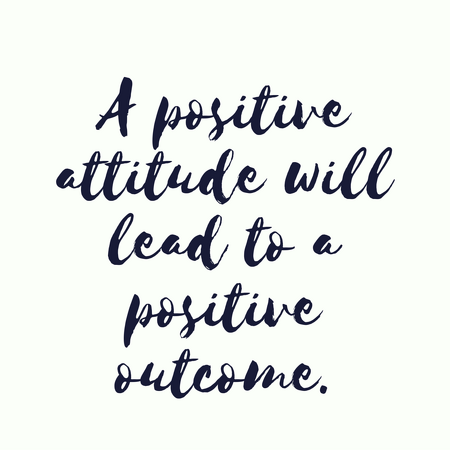
Ultimately, our wellbeing as a society is dependent upon competition and the whole of society benefits from this interaction. Competitive pricing is the process of selecting strategic price points to best take advantage of a product or service based market relative to competition. This pricing method is used more often by businesses selling similar products since services can vary from business to business, while the attributes of a product remain similar.
This book was named the ninth most influential management book of the 20th century. These approaches can be applied to all businesses whether they are product-based or service-based. These strategies have been created to improve and gain a competitive advantage over competitors. These strategies can also be recognized as the comparative advantage and the differential advantage.
The quotes above signify competitive advantage as the ability to stay ahead of present or potential competition. Also, it provides the understanding that resources held by a firm and the business strategy will have a profound impact on generating competitive advantage. Powell (2001, p. 132) views business strategy as the tool that manipulates resources and creates competitive advantage.
Competition is a major tenet of market economies and business, often associated with business competition as companies are in competition with at least one other firm over the same group of customers. Competition inside a company is usually stimulated with the larger purpose of meeting and reaching higher quality of services or improved products that the company may produce or develop. Competition decreases your market share and shrinks your customer base, especially if demand for your products or services is limited from the start. A competitive market can also force you to lower your prices to stay competitive, decreasing your return on each item you produce and sell.
By narrowing the market down to smaller segments, businesses are able to meet the needs of the consumer. Porter believes that once businesses have decided what groups they will target, it is essential to decide if they will take the cost leadership approach or differentiation approach. Porter mentions that it is important to not use all 3 generic strategies because there is a high chance that companies will come out achieving no strategies instead of achieving success. This can be called “stuck in the middle”, and the business won’t be able to have a competitive advantage.
Although economic competition forces lessen your market share, it can also force you to become a better business. If people eat at your restaurant mainly because you’re the most convenient choice, they’ll support your business even if your food isn’t fantastic, as long as it is palatable and safe. But if another restaurant opens nearby, you’ll have to step up your game.
Video CEO Hans Casier said it meant the Antwerp site would be able to compete successfully with the best in the world. The new terminal, which is at the heart of the second largest petrochemical region in the world, was officially opened by the Kris Peeters, the Minister-President of Flanders. “This new terminal gives a new strength to the petrochemical cluster in Antwerp, which for the past 50 years has brought skilled jobs and prosperity to Flanders,” he said.
When too many businesses produce the same products, the market becomes flooded. When inventory reaches unsustainable levels, your company could have too much capital tied up in items that are just sitting on the shelf and not enough cash on hand for urgent expenses such as rent and payroll. The competitiveness of a company is based on the ability to develop core competencies. A core competency is, for example, a specialised knowledge, technique, or skill.
This means that marketers will set prices depending on the results from their research. For instance, if the competitors are pricing their products at a lower price, then it’s up to them to either price their goods at a higher or lower price, all depending on what the company wants to achieve. INEOS Oxide has opened a new million tonne deep-sea terminal at its plant in Belgium so that it can access competitively-priced ethylene from around the world.
Hence, viable business strategy may not be adequate unless it possesses control over unique resources that have the ability to create such a relatively unique advantage. The study of this advantage has attracted profound research interest due to contemporary issues regarding superior performance levels of firms in today’s competitive market. “A firm is said to have a competitive advantage when it is implementing a value creating strategy not simultaneously being implemented by any current or potential player” (Barney 1991 cited by Clulow et al.2003, p. 221). For example, business writers sometimes refer to internal competition. The idea was first introduced by Alfred Sloan at General Motors in the 1920s.
Disadvantages include that businesses have to attract customers in other ways, since the price will not grab the customer’s interest. The price may also barely cover production costs, resulting in low profits. Competitive-based pricing, or market-oriented pricing, involves setting a price based upon analysis and research compiled from the target market. With competition pricing, a firm will base what they charge on what other firms are charging.
In the end, real advantage can be created by the management’s ability to unify corporate-wide technologies and production skills into competencies that capacitate individual businesses to adapt quickly to changing opportunities. The main purpose of positioning is often to create the right perceptions in comparison to competitors. This positioning, or competitive advantage, is based on creating the right “image” or “identity” in the minds of the target group.

And if enough high-quality restaurants move into your area, it may even become known as a food destination, increasing your customer base even further. When a company achieves this goal, it allows it to shape the evolution of an end market.
- Competitive advantage is the leverage a business has over its competitors.
BUSINESS IDEAS
This is the reason behind brand loyalty, or why customers prefer one particular product or service over another. On the contrary, in their 2011 paper ‘Teach to Compete’, American educational psychologist Dr David Shields and education Superintendent Christopher Funk argued that healthy competition should ‘promote excellence, ethics and enjoyment’.
This positioning decision exists of selecting the right core competencies to build upon and emphasize. This strategy can also be called the segmentation strategy, which includes geographic, demographic, behavioral, and physical segmentation.
This type of pricing strategy is generally used once a price for a product or service has reached a level of equilibrium, which occurs when a product has been on the market for a long time and there are many substitutes for the product. Competition occurs in nature, between living organisms which co-exist in the same environment. Animals compete over water supplies, food, mates, and other biological resources. Humans usually compete for food and mates, though when these needs are met deep rivalries often arise over the pursuit of wealth, power, prestige, and fame.
MARKET RESEARCH
Sloan deliberately created areas of overlap between divisions of the company so that each division would compete with the other divisions. For example, the Chevrolet division would compete with the Pontiac division for some market segments.
Change your approach on competition, change your outcome
Competitive advantage refers to factors that allow a company to produce goods or services better or more cheaply than its rivals. These factors allow the productive entity to generate more sales or superior margins compared to its market rivals. One advantage of competitive-based pricing is that it avoids price competition that can damage the company.
This gives businesses a lower manufacturing cost over those of other competitors.The company can add value to the customer via transfer of the cost benefit to them. Michael Porter, a graduate of Harvard University, wrote a book in 1985 which identified three strategies that businesses can use to tackle competition.
The competing brands by the same company allowed parts to be designed by one division and shared by several divisions, for example parts designed by Chevrolet would also be used by Pontiac. In 1931 Procter & Gamble initiated a deliberate system of internal brand-versus-brand rivalry. ] around different brands, with each brand allocated resources, including a dedicated group of employees willing to champion the brand. Each brand manager was given responsibility for the success or failure of the brand, and compensated accordingly. A narrow economic moat is a competitive advantage that one company enjoys over competing firms operating in the same or similar type of industry.
Cost leadership is a business’s ability to produce a product or service that will be at a lower cost than other competitors. If the business is able to produce the same quality product but sell it for less, this gives them a competitive advantage over other businesses. Lower costs will result in higher profits as businesses are still making a reasonable profit on each good or service sold. If businesses are not making a large enough profit, Porter recommends finding a lower-cost base such as labor, materials, and facilities.
Advantages and Disadvantages
Providing higher quality products allows you to take more pride in your work. If your food is good enough you may even draw customers from outside your neighborhood.
Competition encourages excellence in children in the same way it does in general society. As Shields and Funk argue, competition pits people’s immediate interests against each other-but it does so to serve a larger mutually-beneficial purpose. Our open competitive market leads to lower costs and prices for goods and services, more innovation, and greater efficiency and productivity. In our political system, competition delivers a stronger democracy through greater accountability and public debate.
Competitive advantage is the leverage a business has over its competitors. Advertising products or services with lower prices or higher quality piques the interest of consumers.
What are the negative effects of competition?
Negative competition is when we compete with others in such a way that we want to win at the expense of the other person or people involved. In other words, our success is predicated on their failure.


